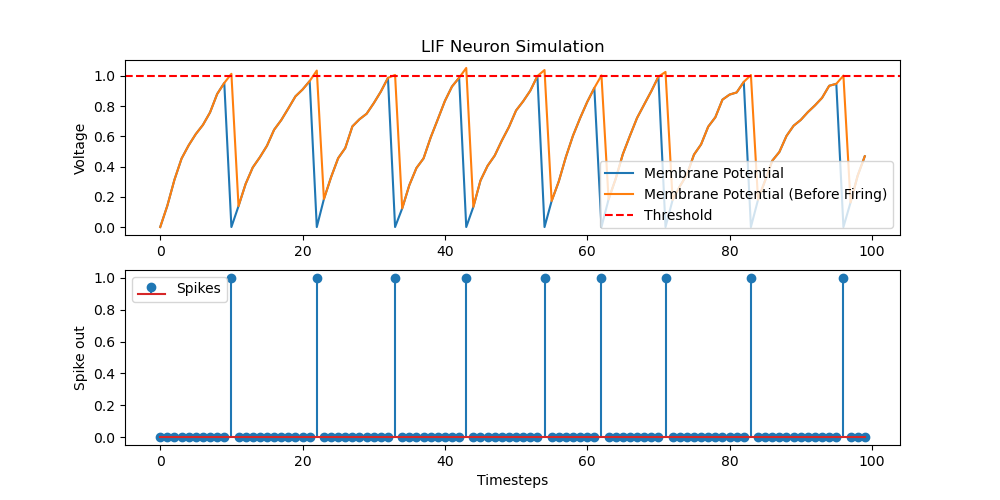1. Introduction
The design of Leaky Integrate-and-Fire (LIF) and Integrate-and-Fire (IF) neurons involves creating digital models of these fundamental components used in neuromorphic computing. The IF neuron model mimics basic biological neuron behavior by accumulating input signals and generating a spike when a threshold is reached.
The LIF neuron extends this concept by including a "leak" factor, which gradually reduces the accumulated potential over time, reflecting a more realistic neuron behavior. These designs, implemented in both Verilog HDL and Python, are crucial for simulating and deploying spiking neural networks in hardware and software. This dual approach allows for comprehensive prototyping and testing in Python before hardware implementation.
The Verilog HDL implementation provided here is based on a single clock cycle design, which is ideal for simulation and testing. However, modifications are needed for those who intend to implement these neurons on FPGA or ASIC hardware, where more complex timing and synchronization might be required.

2. Design Tutorial
-
Download the Zip File:
- Click on LIF and IF Neuron to download the zip file containing Verilog and Python source code.
- Save the file to a location on your computer where you can easily access it.
-
Extract the Zip File:
- Navigate to the location where you saved the zip file.
- Right-click on the file and select "Extract All" to unzip the contents.
-
Explore the Python Code:
- Open a Python development environment (such as Jupyter Notebook, PyCharm, or VS Code).
- Run the Python scripts to simulate the behavior of LIF and IF neurons.
-
Open the Verilog Source Code:
- Open your Verilog development environment (such as ModelSim, Xilinx Vivado, or another Verilog-compatible IDE).
- Import the extracted Verilog source files into your project.
-
Compile and Run the Code:
- For Verilog: Compile the Verilog source code within your development environment.
- Run the simulation or synthesis as required by your project.
- For Python: Observe neuron behavior through plots and data outputs.